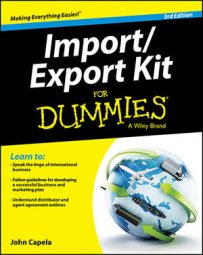When you're looking to be an importer, one of the first things you have to do is identify countries that have the products you want. Depending on what you want to import, you may be limited in your choice of countries. Not every country has every product.
As you narrow down your list of countries that have the product you're importing, consider the following:
Labor costs: Wage rates in many developing countries are lower, which means you'll be able to source goods at lower costs.
Exchange rates: Exchange rates fluctuate, but importing is most favorable when your currency is strong.
Transportation costs: You need to factor in additional costs in moving the cargo from the point of manufacture to the ultimate destination. These costs include shipment of the cargo from the overseas factory to the point of shipment, loading the cargo onto the vessel, overseas shipping, unloading, Customs, and inland freight to the destination.
Whether the U.S. places any restriction on imports from that country: The number of countries with restrictions is extremely limited. You can determine whether there are any restrictions or constraints from specific countries by dealing with a commodity specialist and by talking to your Customs broker.
Whether the country has a preferential trade agreement with the U.S.: These agreements include the North American Free Trade Agreement (NAFTA), the Dominican Republic–Central America–United States Free Trade Agreement (CAFTA-DR), the Generalized System of Preferences (GSP), and others.
Your familiarity with the country: Knowing your target country and having contacts there make doing business easier.
Your understanding of the local language: If you or your employees don't speak the local language, make sure that English is widely spoken by businesspeople or, if not, that translators and interpreters are available.
Level of economic development: Trading with developed countries is generally easier than trading with those that aren't yet developed.
Expect a trade-off between prices and levels of regulation and protection. Suppliers in developing countries may be cheaper, but resolving any problems that occur may be more difficult.
Location of the supplier: The supplier's location affects shipping costs, transit/lead time, and the ease with which you'll be able to visit suppliers if necessary. The farther away a supplier is, the higher the shipping costs will be. Plus, getting the shipment will take longer, and meeting face to face may be more difficult.
Existing trade with the U.S.: A high trade volume suggests that other businesses have successfully chosen the route you're considering.
Because the U.S. government is more interested in promoting exports than promoting imports, information on imports isn't as readily available. You have to rely on direct contact with foreign governments or go through U.S. embassies, consulates, foreign chambers of commerce, and foreign trade commission offices.

